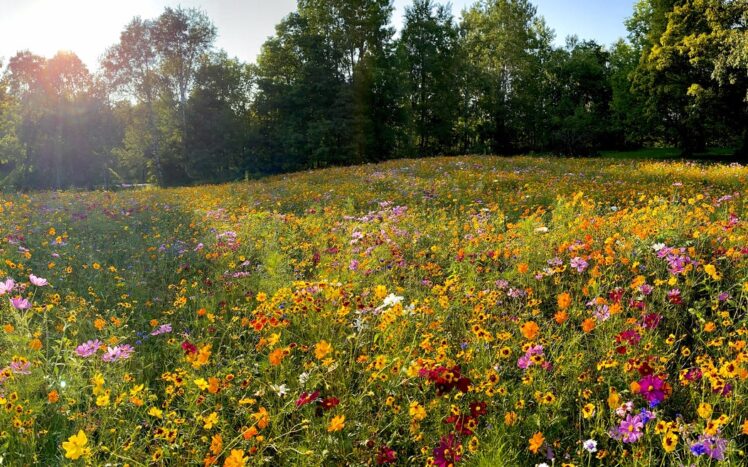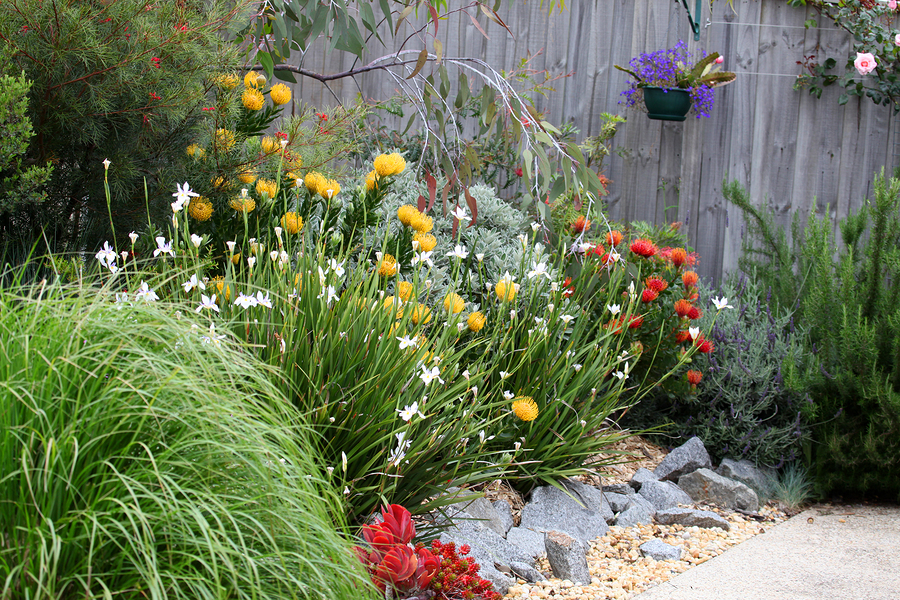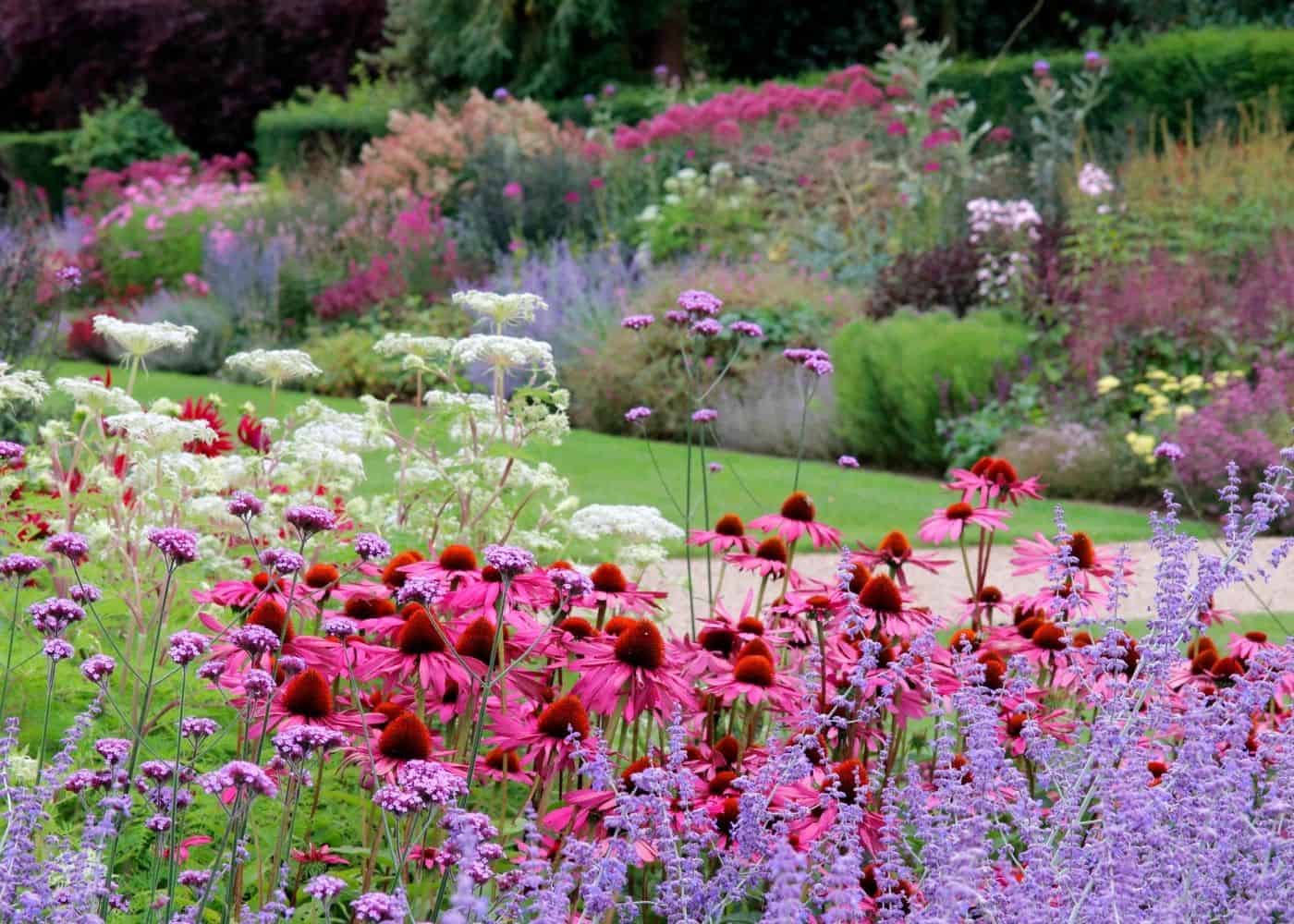Taming the Wild: Incorporating Native Flowers into Your Garden for a Natural Look

Are you looking to give your garden a natural feel? Incorporating native flowers into your outdoor space is the perfect way to do just that. With their vibrant colors and unique shapes, native flowers can add an extra layer of beauty and texture to any landscape.
From wildflowers like daisies and cosmos to delicate blooms such as bluebells, countless varieties of native plants will bring life and color into your garden. This article will explain why you should consider adding these beautiful flowers to your outdoor area, as well as offer tips on how best to care for them so they remain healthy year-round.
So read on for more about taming the wild in your backyard with native plants!
Understanding Your Gardens Climate and Soil Conditions

Source: www.harmonsgrocery.com
Gardening with native flowers can be a rewarding experience. To ensure your garden is successful, it’s important to understand the climate and soil conditions of your area.
By taking into consideration factors such as seasonal temperatures, rainfall levels, and soil type, you can select plants that will thrive in their new home. Different plants have different requirements for optimal growth; understanding these needs will allow you to find the right combination of species that are well-suited to your environment.
For instance, perennials may require more water than annuals while some shrubs prefer dryer climates or soils with higher acidity levels. Additionally, consider the sun exposure needed by various plants; this is especially crucial if youre looking to create an outdoor space full of color throughout all four seasons! At times it can seem overwhelming trying to determine which types of flora are best suited for your location and landscape design goals but having knowledge about your garden’s climate and soil conditions will make this task much easier.
Researching local plant types before purchasing them also gives you insight into how they interact within ecosystems – ensuring you’re selecting varieties that not only look great but support biodiversity too!
Selecting the Best Native Flowers for Your Garden

Source: gardenerspath.com
Incorporating native flowers into your garden can give it a natural and vibrant look. But with so many different kinds of native plants to choose from, how do you know which ones are the best for your garden? Here are some tips to help you select the most suitable native flowers: First, consider where in your garden these flowers will be planted.
Different species may thrive better in sunny or shady spots, while others prefer wet or dry soil. Knowing what type of environment is ideal for each flower will help narrow down your choices and ensure that they flourish in their new home.
Second, research the hardiness zone of each flower variety before making a decision on which one to plant. Most varieties have been assigned an appropriate planting zone based on their ability to survive winter temperatures; if you live outside this range then it’s best not to risk planting them as they won’t last long enough for you to enjoy them! Thirdly, think about color coordination when selecting the right flora for your space – there are countless shades available so make sure that any new additions match up nicely with existing blooms in terms of hue and tone.
And if possible try to go local – choosing botanicals indigenous to where you live ensures greater success rates due to both environmental familiarity and pest resistance. Finally, take note of seasonal bloom cycles when picking out flowers – some species only sparkle during certain times throughout the year while others have more continuous flowering periods– understanding this information can play an important part in creating a colorful display all year round!
Planting and Caring for Native Flowers

Source: www.plantopianlr.com
Native flowers are a great way to bring life and color to your garden. Planting and caring for them is easy when you know the basics of their needs.
It’s important to choose plants that are native to your area so they can thrive in local soil, climate, and weather conditions. When selecting the types of plants you want for your garden, consider things like how much sun or shade each type needs, as well as watering requirements.
When planting native flowers it’s best to start with young seedlings rather than seeds that require more maintenance such as thinning out once they have sprouted. Dig a hole slightly bigger than the rootball of each plant and make sure there’s enough space between them for air circulation.
Water newly planted natives regularly until established, then water deeply once per week during dry times or hot weather spells if needed. Fertilizing may not be necessary unless recommended by an expert due to abundant natural nutrients found in soil where native plants grow naturally; however, some additional fertilization may be necessary if soils are depleted from overuse or lack of organic matter over time.
To help keep weeds away use mulch around native flower beds which also helps retain moisture in the soil and prevents erosion caused by wind or rainwater runoff during storms. Pruning dead foliage encourages new growth but don’t cut back too far because many species require old woody stems for flowering or fruiting next season – just remove dead parts only! Additionally, check on your flowers regularly throughout the year looking out for signs of disease such as pests which should be treated immediately before they spread further into your garden landscape.
With regular care including watering and pruning these beautiful blooms will add flair and beauty all season long!
Enjoying a Wildly Beautiful Garden!

Source: homefortheharvest.com
Bringing a bit of wildness to your garden can create an ambiance that is both inviting and beautiful. Incorporating native flowers into your outdoor space gives you the perfect opportunity for a natural look.
With the right balance between tamed and untamed, you can enjoy a wildly beautiful garden! From vibrant poppies to delicate daisies, native flowers offer viewers a timeless appeal. You can mix them with more familiar plants such as roses or lavender to give your garden depth and interest while also allowing nature’s beauty to shine through.
As well as adding color and texture, these wildflowers will attract beneficial insects like bees or butterflies which are important for helping pollinate other plants in the area. When it comes time to plan out where you would like each flower bed, consider how different varieties interact with each other throughout the season – some may bloom all year long while others might be seasonal – so that there’s always something in bloom no matter what time of year it is.
Think about height too: taller flowers placed at the back of beds bring dimensionality while shorter ones closer towards the front add splashes of bright color against darker foliage below them. Creating just the right combination between manicured gardens and meadows filled with native species will make it difficult for visitors not to admire its wondrous beauty! Enjoying this kind of paradise doesn’t have to take much effort; simply embrace what Mother Nature has given us by incorporating native flowers into your garden design – then sit back and watch as the magic unfolds before your eyes!
Conclusion

Source: thishawaiilife.com
In conclusion, incorporating native flowers into your garden is a great way to achieve a natural look that will be sure to impress. https://thanksabunchflorist.com.au/ has an amazing range of native Australian flowers perfect for any garden and are the ideal choice when taming the wild!





